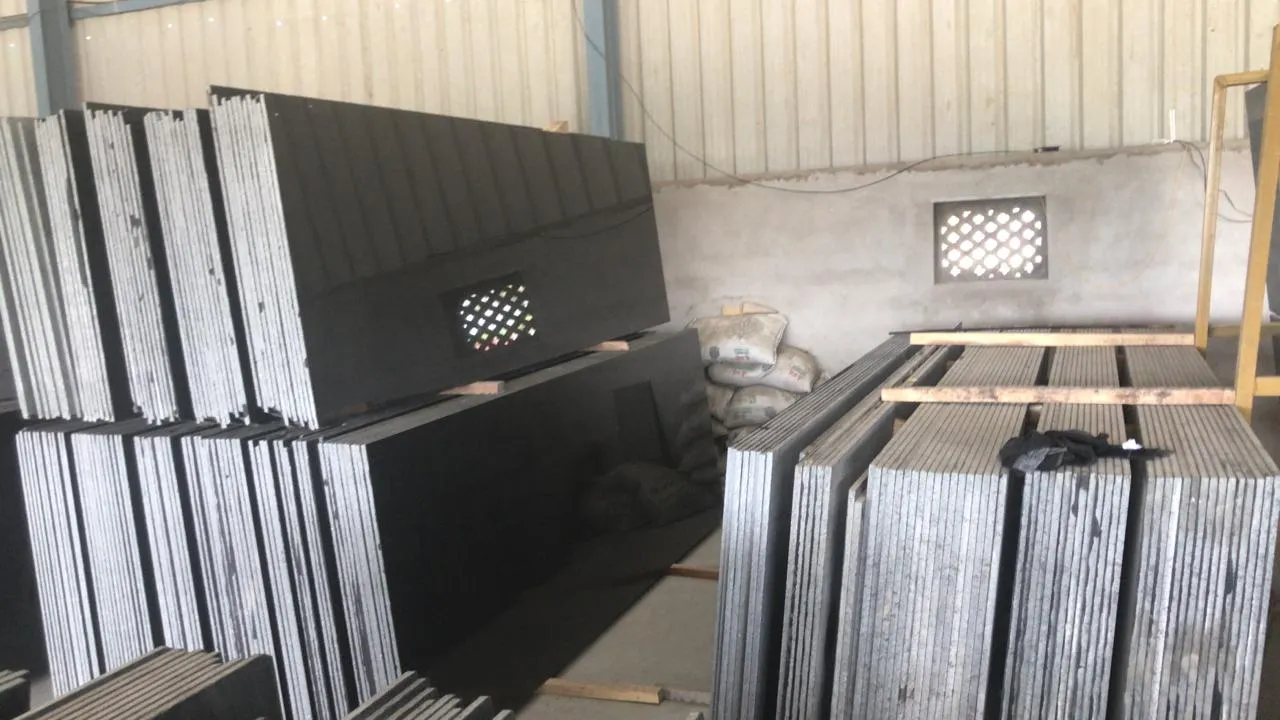Whether you’re building a new house or renovating an old one, the choice of flooring material is one of the most important decisions you’ll make. The flooring material not only sets the tone for your home’s aesthetic appeal but also influences its functionality and durability. Two of the most popular flooring materials are Kota stone and Granite. In this article, we’ll compare the costs of Kota stone and Granite, and consider several factors that influence their prices.
Understanding Kota Stone and Granite
Before delving into the cost comparison, it’s essential to understand what these two materials are.
Kota Stone: Originating from Kota, a region in Rajasthan, India, Kota stone is a type of fine-grained limestone that comes in rich, greenish-blue and brown colors. Its durability, non-porous nature, and non-slippery surface have made it a favorite choice for residential and commercial buildings.
Granite: Known for its strength and durability, Granite is a natural rock that is cut in its natural state and polished for use. Its aesthetic appeal, diverse color range, and longevity have led to its popularity worldwide.
Cost Comparison of Kota Stone and Granite
At the basic level, the cost of Kota Stone tends to be significantly lower than that of Granite. As of this writing, you can expect to pay between $3 and $5 per square foot for Kota Stone, whereas Granite costs typically range from $15 to $30 per square foot.
Factors Influencing Kota Stone and Granite Prices
The final cost of these stones is influenced by several factors, such as quality, size, color, finish, transportation, and installation charges.
Quality: Higher quality stones are more expensive. The quality of these stones is often determined by their color consistency, density, and thickness.
Size and Thickness: Larger and thicker slabs are typically more expensive due to the increased material volume and the difficulty of processing and handling.
Color: Rare colors are more expensive. For instance, in the case of Granite, blue and purple stones are relatively rare, making them more costly.
Finish: The finish given to the stone also influences the price. Polished finish stones are usually more expensive than honed or flamed ones.
Transportation and Installation: The transportation and installation costs add up to the total cost. These costs vary depending on the location and the complexity of the installation.
Why Might You Choose One Over the Other?
Despite the price differences, the decision between Kota Stone and Granite isn’t merely about cost. Other factors come into play.
Durability: Granite is more durable and resistant to scratches and stains compared to Kota Stone, which may justify the higher cost for some homeowners.
Maintenance: Kota Stone requires more frequent maintenance and sealing to prevent water absorption and staining, while Granite requires less maintenance.
Aesthetics: The choice between Kota Stone and Granite can also come down to aesthetic preference. Granite offers more variety in colors and patterns, while Kota Stone has a more earthy and natural look.
Environmentally Friendly: Kota Stone is considered more eco-friendly due to its availability and less energy-intensive manufacturing process compared to Granite, which has to be quarried and transported from specific locations.
In conclusion, while Kota Stone is generally less expensive than Granite, the choice between the two goes beyond price. The decision should also take into consideration the stone’s durability, maintenance, aesthetic appeal, and environmental impact. Regardless of the choice you make, both Kota Stone and Granite offer a timeless appeal and will enhance the beauty and value of your property.
kota stone vs granite price
When deciding between Kota Stone and Granite, there are several factors to consider beyond just the cost, as each material has its own unique set of characteristics, benefits, and drawbacks.
Kota Stone
Kota Stone is a type of limestone that is mainly found in the region of Kota, Rajasthan in India. Its unique greenish-blue hue, smooth texture, and high durability make it a popular choice for flooring in both residential and commercial buildings.
Aesthetics: Kota Stone offers a more earthy and natural look due to its fine-grained texture and greenish-blue color.
Durability: While it’s durable, it isn’t as resistant to scratches or stains as granite. Regular sealing is recommended to prevent water absorption and staining.
Maintenance: Compared to granite, Kota Stone requires more maintenance to keep it looking its best.
Environmental Impact: Kota Stone is considered more environmentally friendly as it is more widely available and its processing consumes less energy compared to granite.
Price: Generally, Kota Stone is less expensive than granite.
Granite
Granite is an igneous rock known for its strength and durability. It’s one of the hardest natural stones available, which makes it a favorite choice for kitchen countertops and high-traffic flooring areas.
Aesthetics: Granite has a broader variety of colors and patterns to choose from. Its high polish and elegant look make it a preferred choice for luxury designs.
Durability: Granite is extremely hard and resistant to scratches, heat, and stains, making it an ideal material for kitchen countertops as well as flooring.
Maintenance: Although it should be sealed regularly to prevent staining, overall, granite requires less maintenance than Kota Stone.
Environmental Impact: Granite extraction involves quarrying which can lead to significant erosion and other environmental issues. Moreover, its transportation over long distances can result in a higher carbon footprint.
Price: Due to its features and benefits, granite is usually more expensive than Kota Stone.
In summary, while Granite offers superior durability, more variety in terms of colors, and requires less maintenance, it does tend to be more expensive and less eco-friendly than Kota Stone. Conversely, Kota Stone, while more affordable and environmentally friendly, requires more maintenance and may not be as resistant to damage. Your choice between the two would depend on your budget, design preference, maintenance ability, and environmental consciousness.
